Quarterly Business Reviews (QBRs) have become one of the most common ways for MSPs to maintain communication with clients, review the past few months, and lay out a plan for the future. But for many MSPs, finding the right way to coordinate and prepare for these meetings can be a challenge.
ScalePad has conducted a survey of more than 1,000 MSPs regarding the state of their QBRs. By collecting data regarding the varied approaches to client communication, we can see the trends happening across the MSP industry. What works and what doesn’t? Are there common roadblocks or misconceptions regarding QBRs? And how do MSPs balance meetings for all of their clients?
Hear directly from ScalePad partnered MSPs regarding their approach to developing a high quality QBR. This report features several MSPs sharing their experiences on a variety of QBR related topics such as timing of meetings, making preparation efficient, building relationships with clients, and more.
As the MSP industry has faced a great deal of change in recent years, the technical maturity and growth has remained consistent.
The quarterly business review is still that – quarterly. 43% of respondents to our survey said they perform their business reviews on a quarterly basis. However, our survey showed that the trend for MSPs is to talk to their clients more often, rather than less often, as 31% said they do a business review every month, and 14% said they were doing it bi-monthly. Combined, that’s 88% of respondents saying they talk to their clients at least once per quarter.
A growing trend in the MSP space is to remove the Q part of the QBR and replace it with a C – Continuous. These business reviews are generally shorter in nature, but directed at focused topics, strategizing, and long-term goals rather than reports. Some of our Partners have already taken this approach and implemented more frequent business review meetings into their business operations.
“Honestly [the monthly] meetings are more focused, smaller, shorter, and even the quarterly often can be done in 45 minutes,” said Joe Markert, CEO of TransformITive. “But we get so much more out of it because we are focused on those specific items for each meeting. That really has, in the end, amplified the value of the relationship for us.”

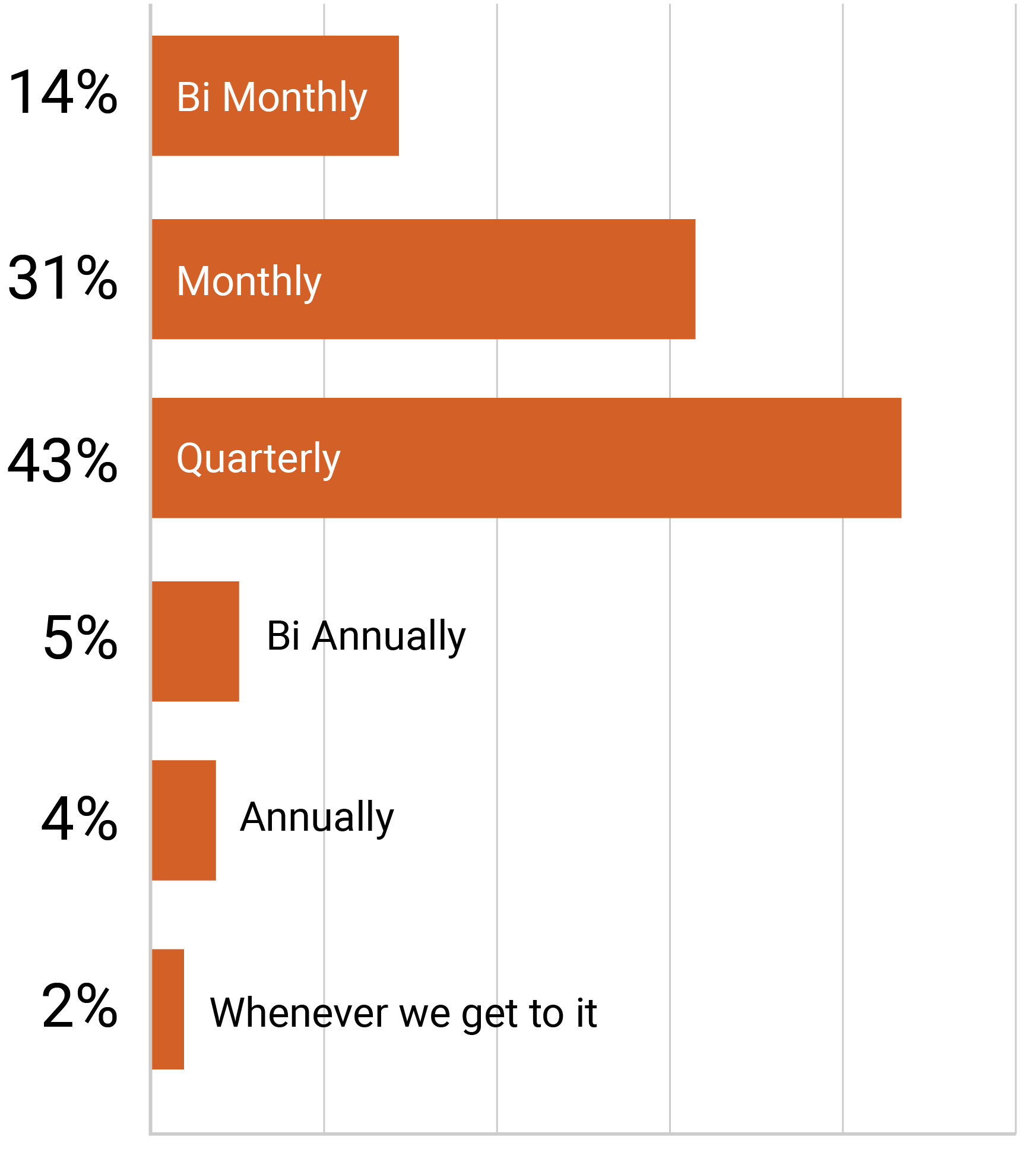
Markert still does an official QBR meeting with each of his clients, but he has smaller meetings building up to the QBR that continues the conversation and builds the relationship. It’s during these meetings they will discuss service delivery, what does the client have coming up, such as new hires or needs, and a review of the last QBR to ensure things are moving forward. But Markert admits that getting people to do QBRs quarterly is still a challenge, as everyone is busy and it’s difficult to connect, which makes these smaller reviews even more meaningful.
“We keep that lower level dialogue happening still every few weeks. And then once we realize we've hit a perfect inflection point, we'll make sure that QBR happens and the right people are brought in,” said Markert. “When we do it that way we get better buy-in.”
When we asked MSPs what they want to see changed about their client meeting process, 47% said the frequency of the meetings. The majority of those asking for changes in the frequency were those who were already meeting with clients at a higher rate, as those doing quarterly and monthly business reviews accounted for 37% each of respondents. 18% were doing bi-monthly.
The challenge for MSPs is finding the perfect amount of meetings that satisfy the client, but also the MSPs’ goals and strategic plans. Some clients simply don’t like meeting, while others want constant communication. Trying to get the right people in the room can be a difficult challenge to overcome, as 58% of respondents said improved client attendance is something they want to see changed in their business review process.

of MSPs want to change the FREQUENCY of their meetings
of MSPs want to improve
CLIENT ATTENDANCE

Many of our MSP Partners are moving to smaller meetings to talk tactical plans with account managers and technicians, leaving the actual Quarterly Business Review to owners and C-suite members to dive into strategic and planning. That way, the attendance is more likely to increase as the owner is more engaged in a business conversation, rather than questions about needing a new laptop for a new hire.
“They like the idea of having kind of a bigger strategic meeting, as opposed to all of the tactical things that they do with their account managers,” said Luis Alvarez, CEO of Alvarez Technology Group. “They look forward to the QBR as a different kind of meeting. This is an opportunity for us to ask, what’s going on with your business that we need to know. Then you get into a deeper conversation about strategic direction and you being at the front end.”
One of the deciding factors about how often MSPs can do business reviews is how long it takes to prepare for them. Our survey showed 33% of respondents take 1 to 2 hours to prepare for a business review meeting, while 28% it was taking 2 to 4 hours. That’s 1 to 4 hours per client, per business review, for 61% of our respondents.
Each report increases the prep time, unless reporting is automated. But only 4% of respondents said they can prepare in less than 15 minutes with the help of automation. And not surprising, they also were speaking to their clients more often, with 89% doing their business review either quarterly, monthly, or bi-monthly.
“We try to streamline a lot of the preparation,” said Ann Westerheim, Founder and President of Ekaru. “We do at least an hour of pulling together the various [reports] we want to have as background. We tend to not go through line item by item, but we want all the supporting materials there. So it takes about an hour.”

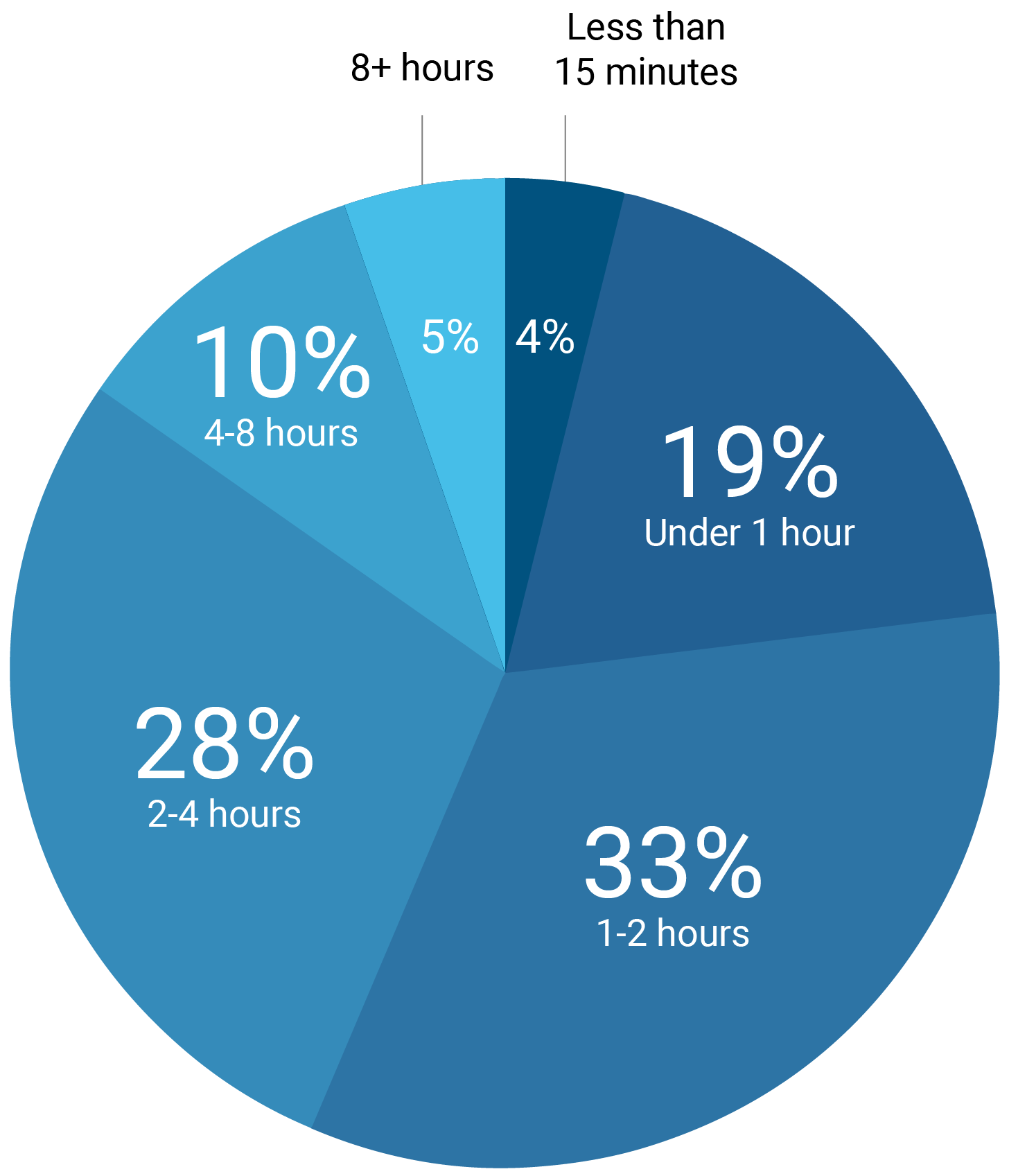

Preparing for a business review is one of the most time consuming parts of the entire process. Many MSPs we surveyed are spending more time preparing for the meeting than the length of the meeting itself.
38% of respondents said that decreasing the preparation time is something they want to change, bringing it down from the multiple hours it takes to prepare, to under an hour, or to a completely automated process. 34% of respondents who take 1 to 2 hours to prepare and 30% of respondents who take 2 to 4 hours to prepare said decreasing prep time was something that time was something they were looking to change.
As part of preparing for the business review, MSPs are still creating plenty of reports for their clients to read. Of our survey respondents, 79% said they are creating reports specifically to review resources, such as finance, people, hardware, software, and subscriptions.
In total, 92% of people we surveyed said they produce at least one report for their clients as part of the QBR process, but only 22% of those respondents producing a report are preparing for the business review in an hour or less. The remainder are spending over an hour, with 47% of respondents spending over two hours on report building.
“You end up reporting on quite a vast amount of information,” said Nick DaCosta-Greene, CEO of Curatrix. “But we only offer that if they want more in-depth reporting. Some are quite happy to jump on a call and just have a quick chat and move on. But some more professional, larger organizations, that doesn’t work for them. So having the ammo, as I like to call it, the amount of reporting that we have and can get is vastly important.”

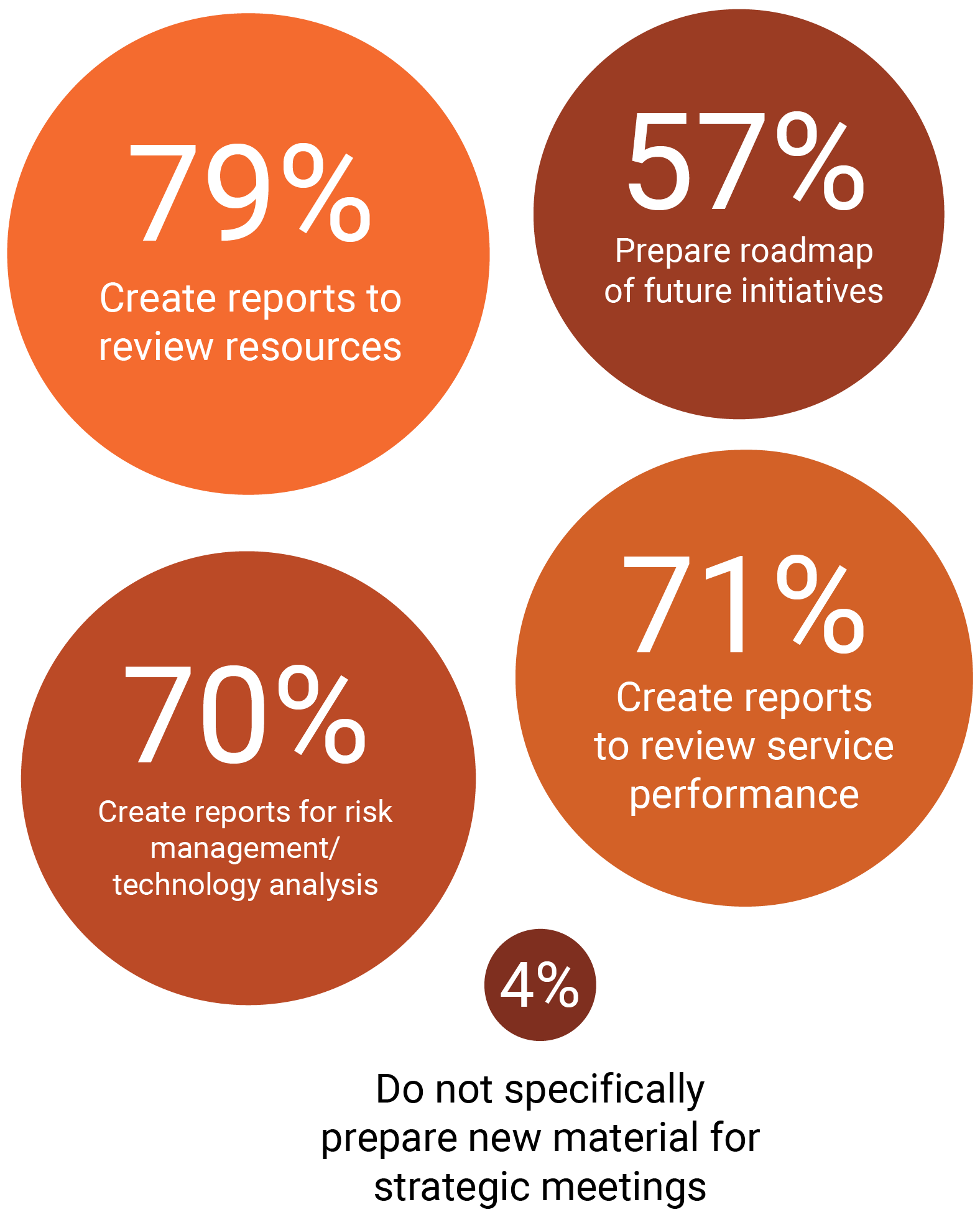
of respondents approach the QBR meeting from a strategy and long-range planning approach

approach the QBR as a way to prepare a roadmap for FUTURE INITIATIVES
A driving trend in the business review process is to limit the reports presented to customers, or to send them in advance so that the meeting isn’t just a review of reports, but rather a conversation and strategy session. While 63% of respondents said they approach the QBR meeting from a strategy and long-range planning approach, only 57% were preparing a roadmap for future initiatives that need to be completed. One of the main reasons for the lack of future planning is that clients are spending too much time reading reports, or avoiding the meeting all together because it’s just report reading. Instead, they want to have a meaningful dialogue around strategy and future planning.
“You want to have a conversation with people, not make them read a bunch of reports,” said Darrin LeBlanc, Client Engagement Manager with PEI. “It’s not a homework assignment. After a few QBR sessions, we realized what people were looking for. So, we cut the number of reports down and held more of a conversation with people.”
The pandemic changed global attitudes toward remote work across the world, and MSPs have now adjusted to meeting with clients both online and in-person. MSPs have become more flexible and willing to adapt, as the industry is seeing a mixture of in-person meetings alongside the continuation of virtual check-ins. Our survey showed that nearly 40% of respondents still held their business reviews mostly virtually. However, 30% of respondents were still conducting their QBRs mostly in person, with another 26% reporting an even mix of both styles.
Even though businesses have kept more flexible policies for virtual meetings since pandemic restrictions have been lessened, many are returning to business as usual. Some of the common reasons MSPs have shared include the immediacy of meeting in-person and the ability to build and maintain personal connections, which can be more difficult to foster over the internet. “We’re not seeing as many clients in person with our technical team, nor with our sales team. A lot of it’s done in these zoom calls and things like that. I think it’s a temporary fit, but I think it’ll swing back that people are going to crave face-to-face human meetings and things along that line,” Paul Riedl, CEO of River Run, said. “You get a better feel for people. You get a better feel for clients’ locations. You get a better feel all around.”
While the convenience and speed of virtual meetings is important and helpful, opportunities to use both methods can help improve understanding of the topics discussed.
“Let’s make sure they’re paying attention because we’ve got to make sure that people understand what are the faux pas that they can make with this wonderful world of IT,” Riedl said. “So that gives us an opportunity for training, which gives us an opportunity to make a stronger connection with people, which again, helps with the business there.”
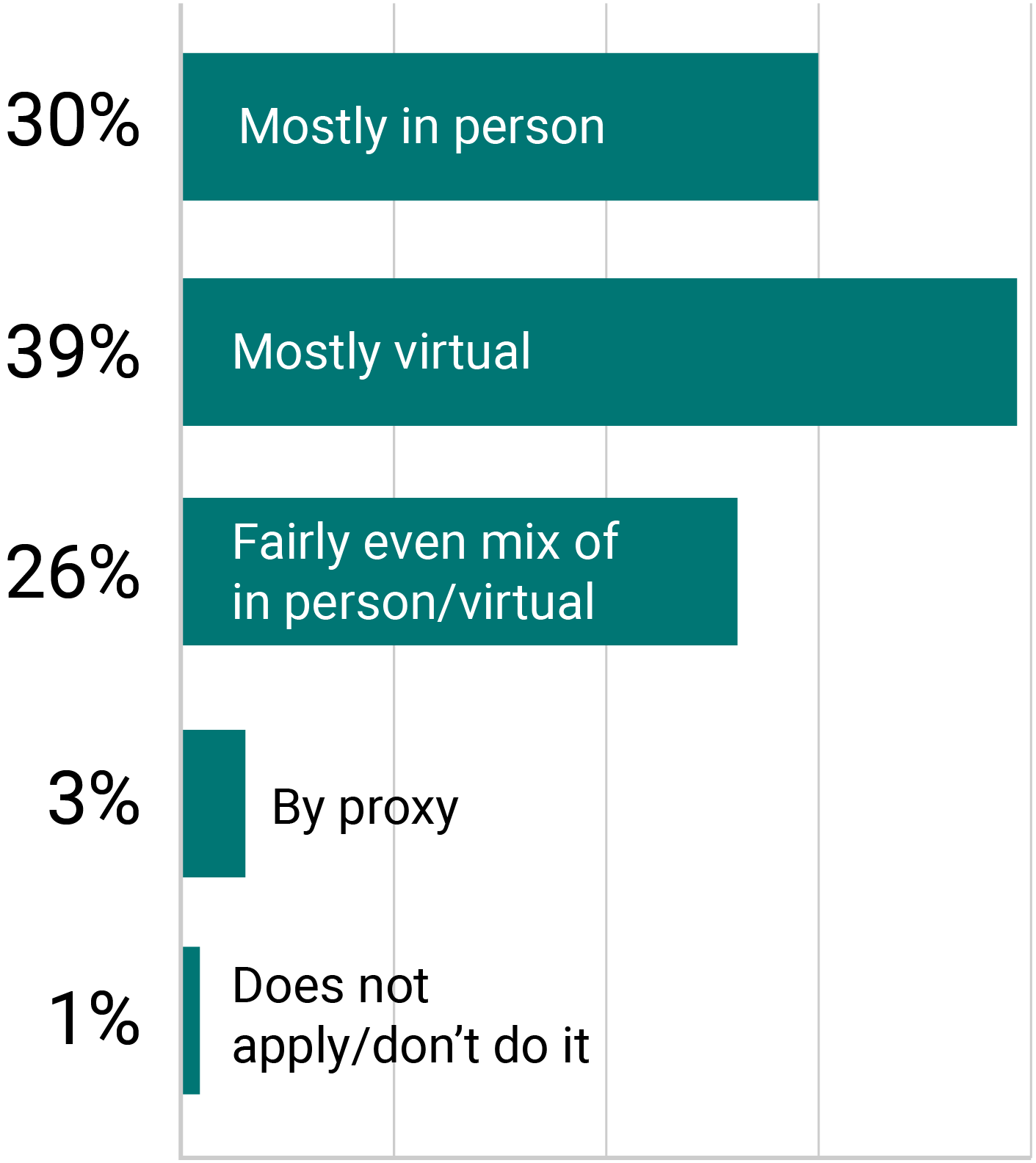
In addition to the often time consuming task of preparing for a QBR, a strong majority of MSPs surveyed said the meetings themselves can last quite a while as well. 62% of those surveyed said their average QBRs are 1 to 2 hours long. Another 17% say their meetings last more than 2 hours. 21% of surveyed MSPs take 1 hour or less.
Of the MSPs spending 1 to 2 hours in meetings, 41% of them spend 1 to 2 hours in preparation and 32% spend 2 to 4 hours getting ready. Beyond that, 8% of MSPs said they can spend a whopping 4 to 8 hours preparing for the average meeting.
Spending more time than it takes to conduct the meeting puts MSPs in a tough spot. MSPs have to ask themselves if the value they are getting out of meetings is worth that imbalanced time investment by their staff. It’s not often that MSPs expect to be in very long client meetings, but to report upwards of 2 hours as an average number suggests difficulties in the approach to meeting with clients.

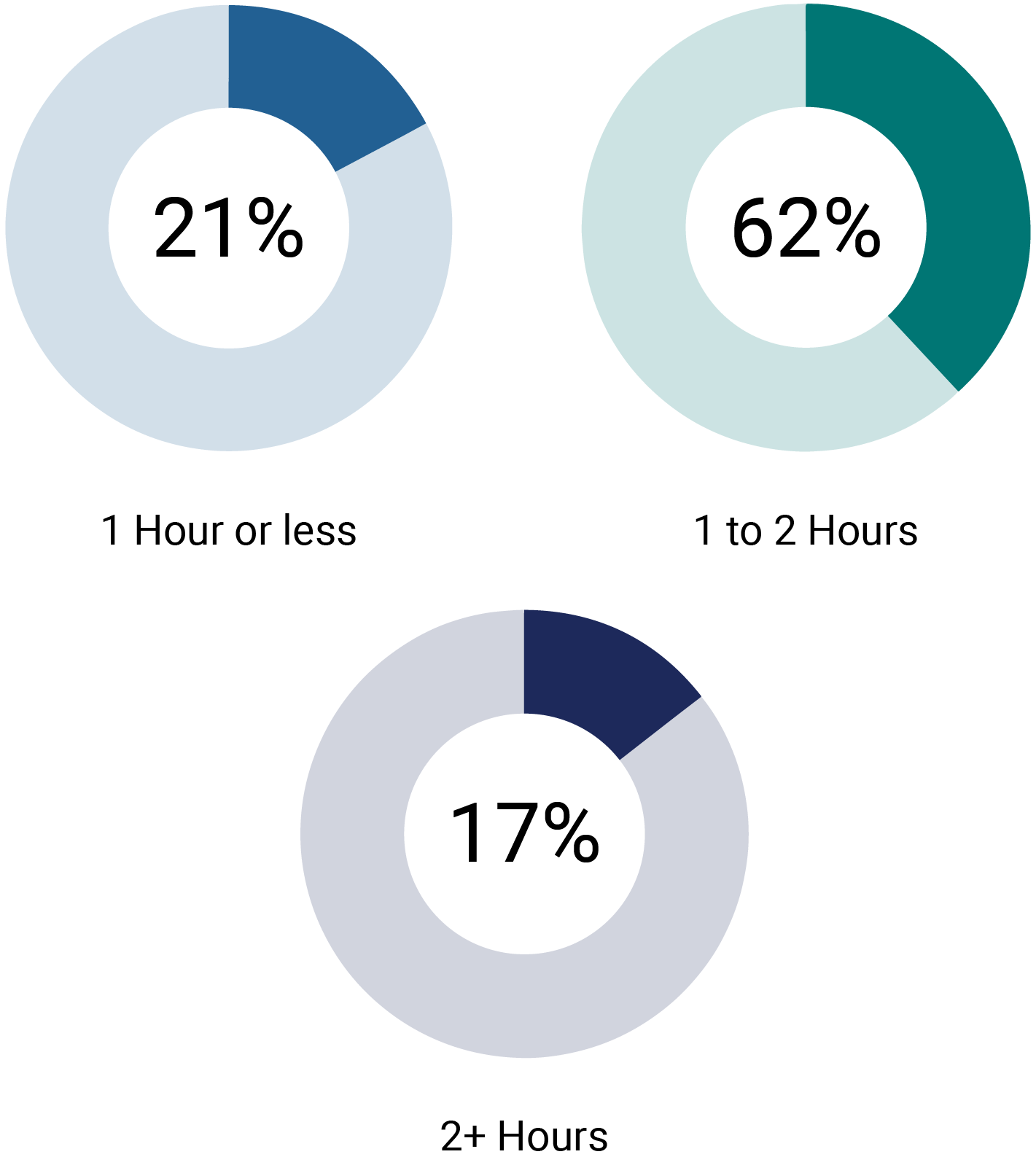
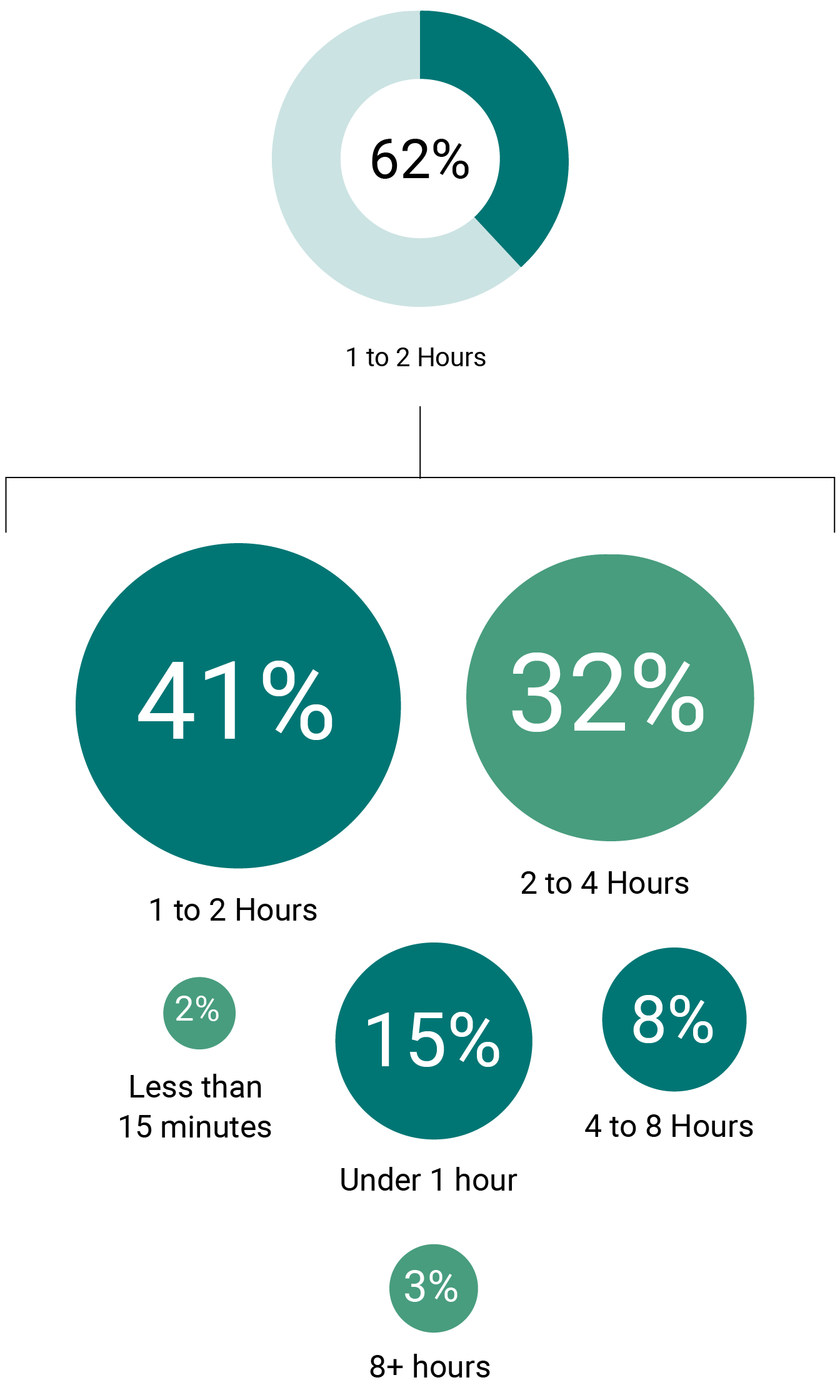
If preparation is taking too long, it can bleed into meeting length and turn into overly-long and boring conversations that clients don’t want to be a part of. Additionally, extended preparation and meeting times can make it challenging for MSPs to meet with all of their clients.
With large client bases, the time required to prepare and conduct QBRs means that not every client gets a meeting. This can lead to changes in meeting frequency, like moving to an annual or ad hoc schedule. A lower frequency can make it harder for an MSP to provide a high standard of service and work with the client to plan for the future.
How you use the time in QBRs can also determine how successful those meetings are. MSPs that have found success with their client communications often spend smaller amounts of time by focusing on the most important priorities and working with clients to develop IT plans for the near future. “Calls run about an hour and then we spend about an hour on follow up for anything like any deliverables or other questions that might have come up that we need to answer,” said Ann Westerheim, founder and president of Ekaru.
Working with clients to develop a strategic roadmap has become one of the most popular approaches to QBRs in the industry. A total of 63% of survey responses said it was one of their primary goals for QBRs or similar client meetings. Strategy and long-term planning was closely followed by risk review and management, as well as value reinforcement and relationship building as high priority discussion points.
It’s easy to see why strategic planning has become so effective. MSPs are able to go beyond reacting to problems and fixing current issues. They can work to develop clients’ future plans, IT budgets, and execute new projects. This approach not only develops client businesses to be more efficient and secure, but can also result in increased revenue for MSPs.
Planning just a few months in advance can increase client buy-in for upcoming necessary purchases, like hardware replacements or warranty renewals. Developing a long-term roadmap for future assets shows clients the value you bring to their budget and organization planning. MSPs diving into strategy with clients are more likely to increase meeting attendance, as well as earn contract renewals and extensions as clients come to rely on them.
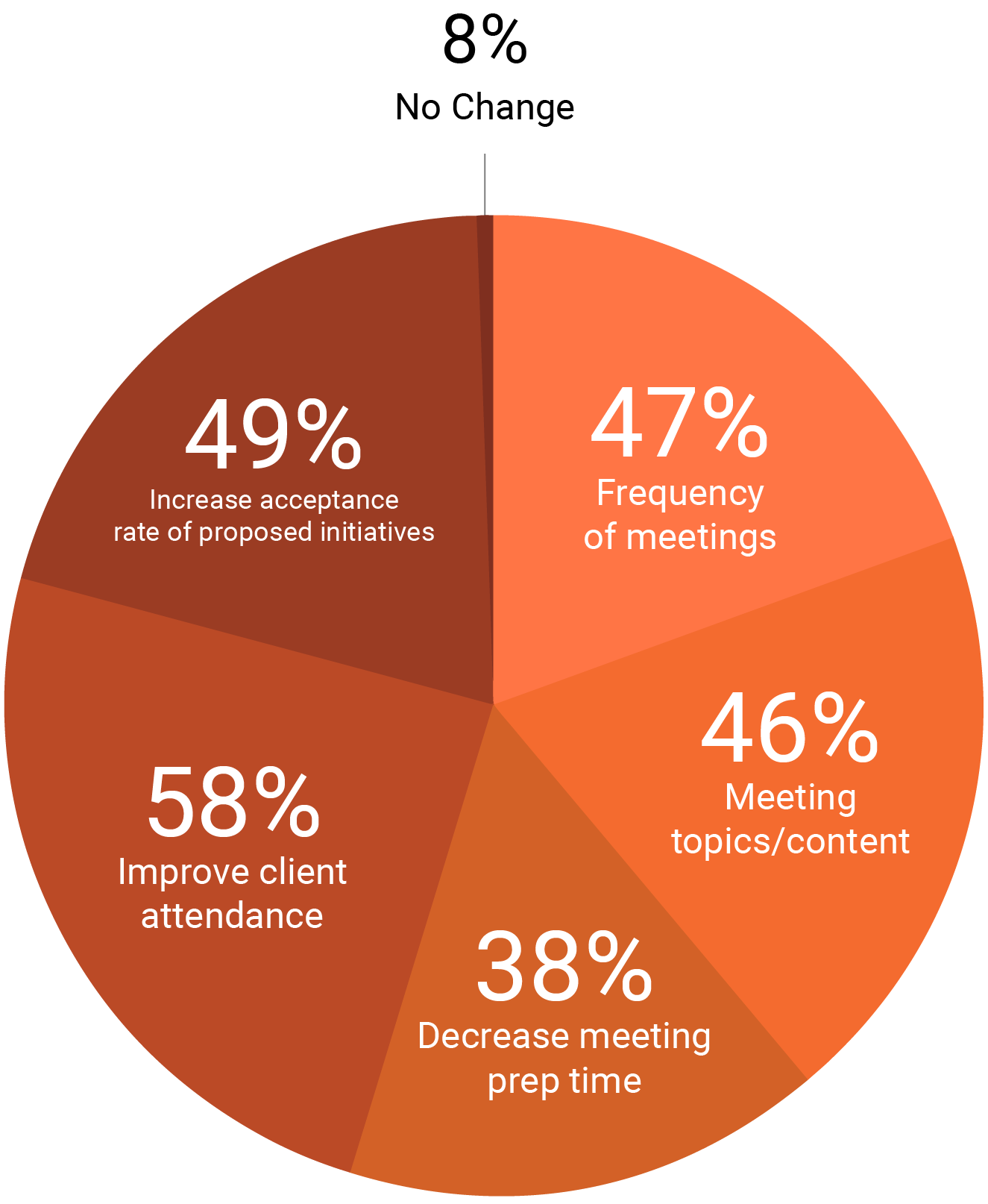

Luis Alvarez, CEO of Alvarez Technology Group, said strategic planning has allowed them to be viewed as a collaborator, rather than just another vendor.
“It does show that we are interested in their strategic direction and we’re not just a vendor, we’re a partner. You’re getting stickier because they now are thinking, ‘ATG is gonna be here with me three years from now when I do this project, because we’re planning for it now,” he said.
“They’re now thinking of you as being part of that strategic direction that they’re going in. So if you don’t bring it up, if you don’t have those strategic focused meetings with your clients, you’re doing yourself a disfavor, because you’re just looking like a vendor that can be replaced. Not somebody that’s gonna be there a couple years from now when they implement that new building or when they add a new line of business. You know about it today and are helping them scale to the point where they can implement that.”
The era of looking only into the past is over. In 2023, the state of the QBR is one of proactivity, growth, and communication. MSPs across the industry, from self-employed individuals to hundred-employee operations, show that they are putting more effort into helping their clients build for the future, stay protected from hardware failure and cyber attacks, and working towards creating longer lasting working relationships.
This proactive trend in QBRs is not only helping clients, but offers MSPs more opportunity to increase revenue across the board through new projects, warranty standards, and hardware service.
Based on trends seen in this survey, MSPs are poised to continue developing better QBRs while making the preparation process more efficient for staff to complete, and more efficient to conduct. If these trends continue, MSPs will be saving hundreds of staff hours per year on manual processes. Instead they will be using that time to actually provide meaningful service to their clients, making better use of staff time and increasing revenue.
The future of the QBR is looking to become faster and easier for all involved, transforming one of the biggest MSP time investments from a burden into a productive meeting that people are excited to attend.
ScalePad creates software that helps IT managed service providers work more effectively internally and with their clients. From wrangling hardware and software assets to monitoring vital backups, our platforms give MSPs the tools they need to succeed. Lifecycle Manager and Backup Radar continue to evolve to meet the needs of our Partners.
This report was created by the ScalePad Content Team:
Evan Pappas, Content Writer
Andrew Brethauer, Manager
Cheryl Stewart, Content Writer